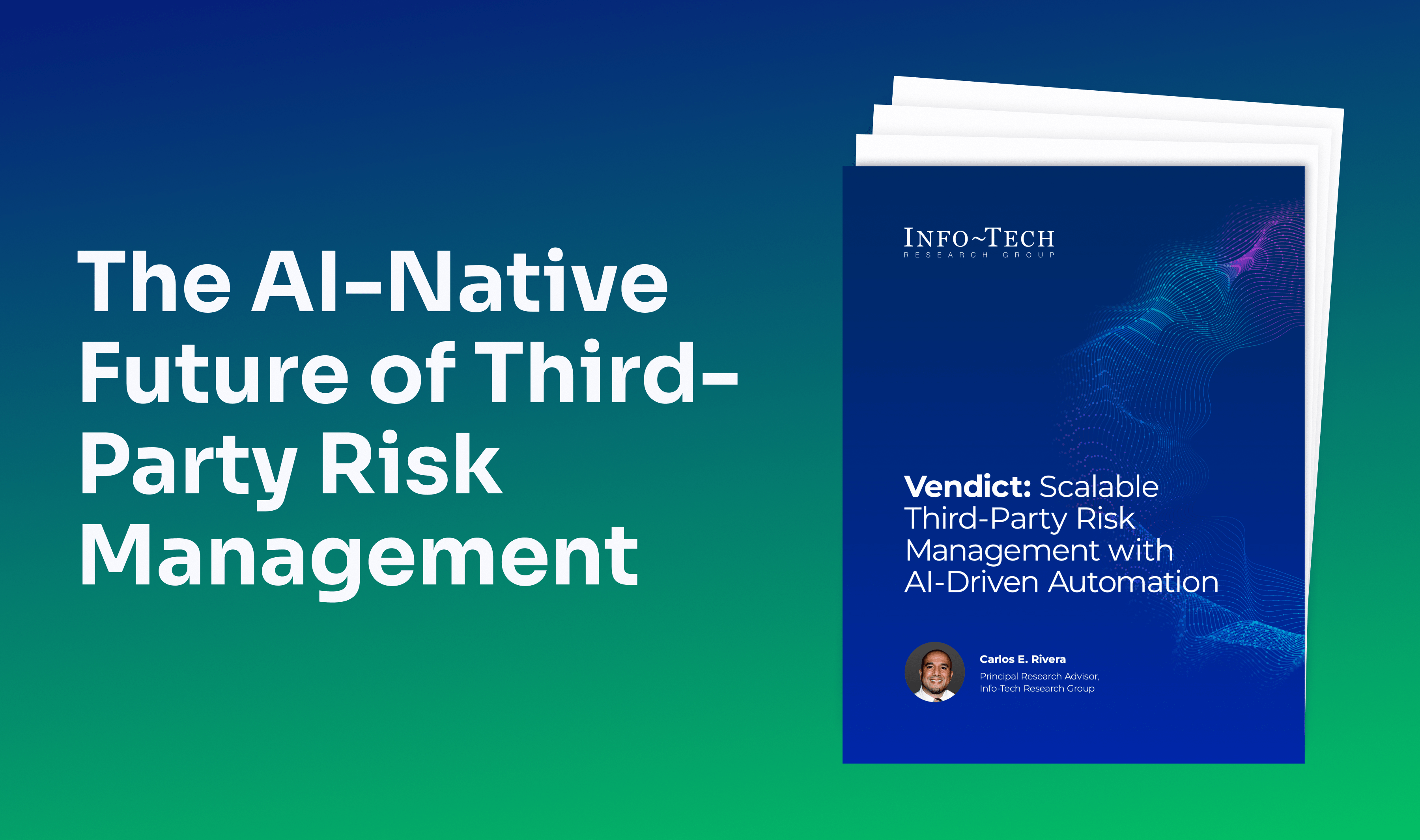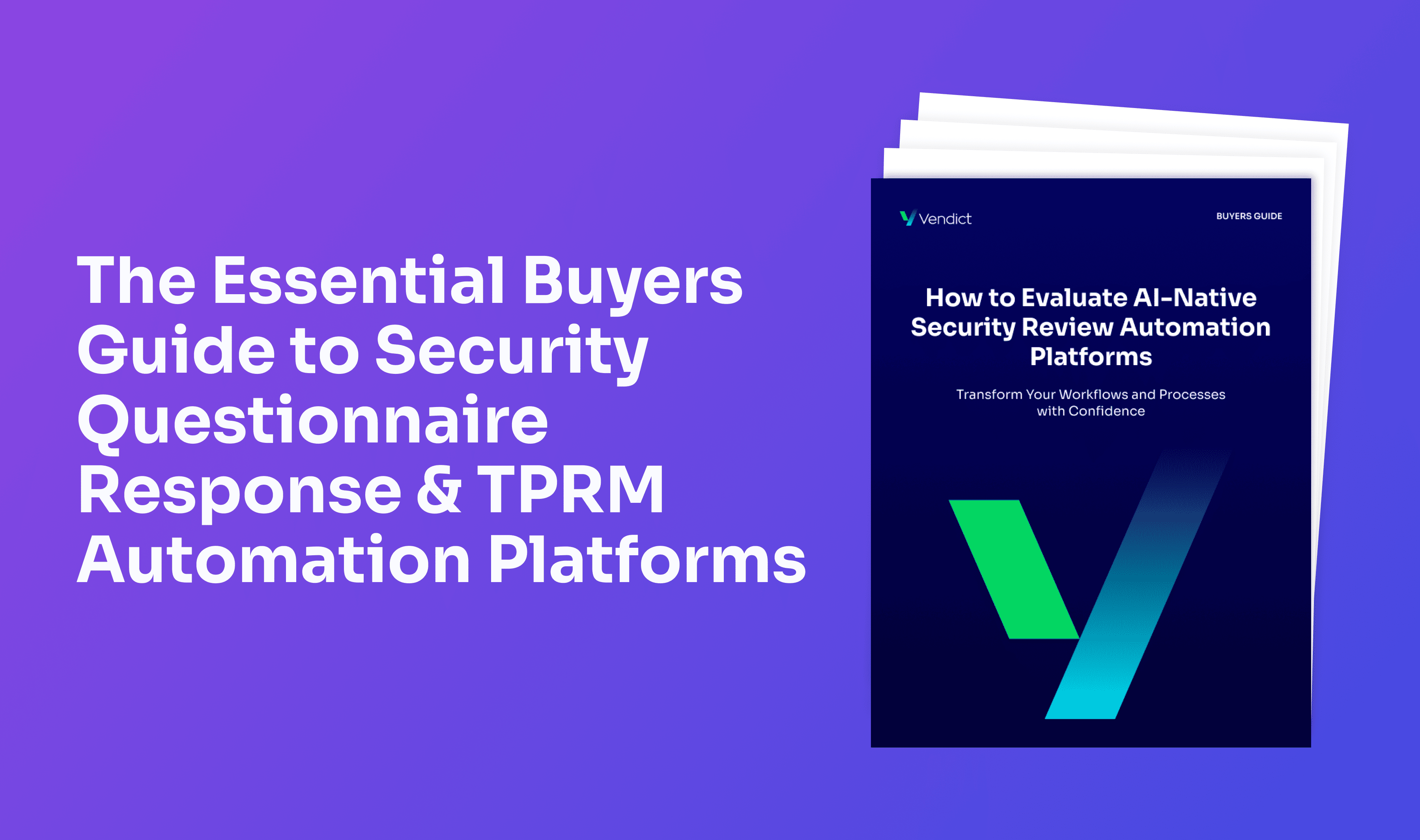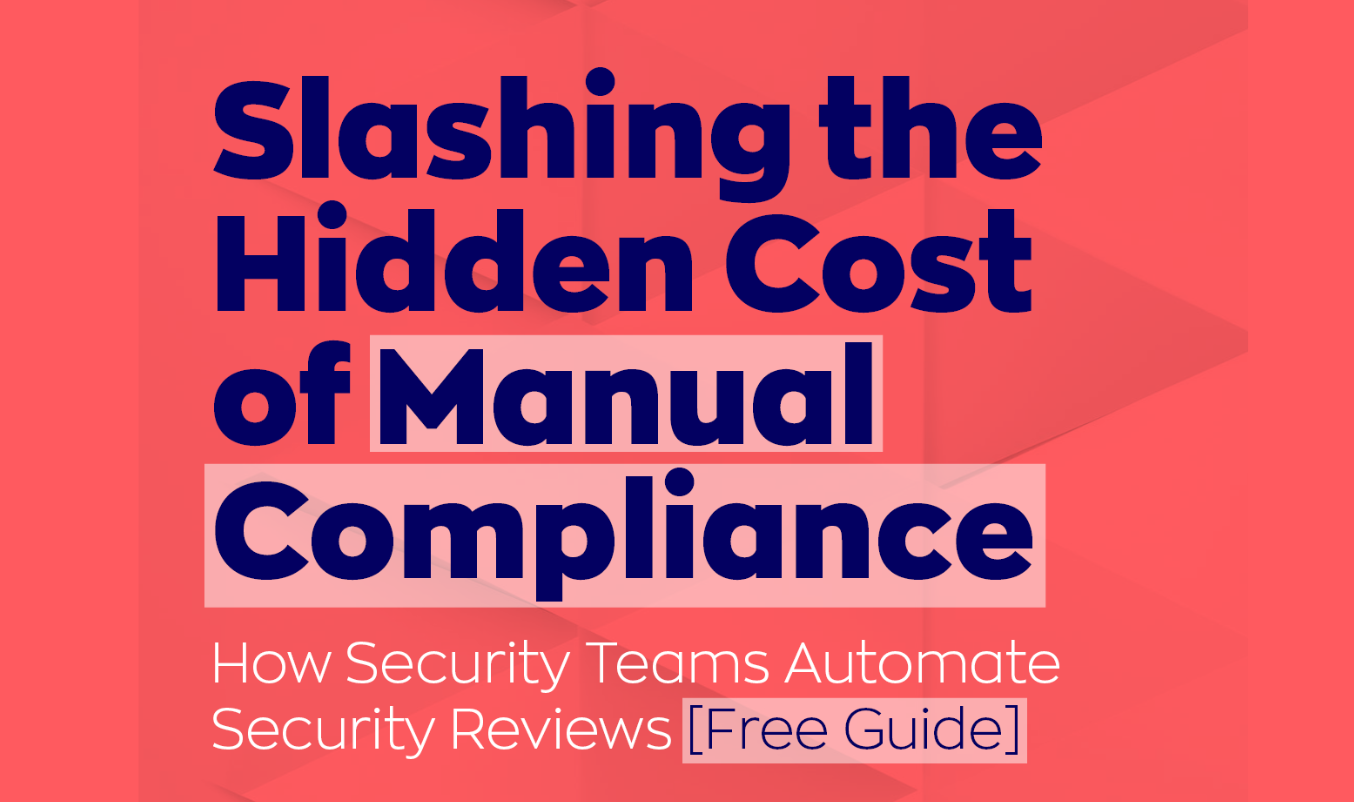How Artificial Intelligence Is Reshaping Cybersecurity

AI's integration into cybersecurity brings a mix of promise and peril.
On one side, it streamlines risk management, vulnerability detection, and incident response, enhancing businesses’ cyber resilience. However, in the wrong hands, AI fuels sophisticated threats like undetectable phishing, potentially leading to breaches, financial losses, and reputational damage.
It’s easy to picture: Automated scam emails flood your employees' inboxes, expertly mimicking trusted sources. Someone clicks, and your network is breached. Data stolen, operations halted, and trust shattered. Scary, we know.
The power of AI largely comes down to how it’s wielded.
In this article, we delve into the dual impact of AI on cybersecurity, uncovering both its advantages and challenges.
Additionally, we unveil four essential strategies to effectively navigate this complex landscape: bolstering cybersecurity team training, creating collaborative internal security practices, establishing strategic partnerships to combat deepfakes, and prudently outsourcing to expert services.
These tactics help you build expertise in your teams and unlock the positive power of AI for cybersecurity.

Table of Contents
When implemented properly, AI is helping to revolutionize cybersecurity by acting like an alert digital detective that uncovers malware, unusual data patterns, anomalies in network traffic, and potential threats.
For example, it enhances defensive tactics in critical sectors like healthcare, where AI monitors network traffic to preemptively identify and counteract hacking attempts, safeguarding sensitive patient information and protecting hospitals’ reputations.
Initially, AI in cybersecurity was primarily reactive, focusing on post-incident detection by identifying known malware patterns. However, the technology has evolved to include predictive analytics, using historical data to proactively anticipate and mitigate potential threats.
This means that today, AI doesn't just respond to incidents; it actively seeks out and thwarts potential cyber threats before they materialize. This shift is a crucial development in the face of increasingly sophisticated cyber attacks.
The future of AI in cybersecurity is about dynamic adaptation. While current AI systems can recognize new variants of known malware through behavioral analysis, the next frontier is detecting entirely new forms, particularly those using advanced evasion techniques.
Our aim as cybersecurity professionals is to evolve AI into a real-time, adaptive tool against novel threats, marking a significant leap towards a continuously learning and more proactive cybersecurity landscape.
AI is already equipping CISOs and cybersecurity leaders with an arsenal of powerful tools, revolutionizing their teams’ operational capabilities.
Let's delve into the top five advantages AI can bring to CISOs and GRC professionals.
1. Detecting Vulnerabilities
AI's impact on detecting vulnerabilities is transformative, especially with its integration into advanced intrusion detection systems (IDS).
These systems use AI to continuously monitor network traffic, swiftly identifying anomalies that may indicate a security breach. For instance, they can detect unusual login patterns or unexpected data flows, which are early signs of cyber threats.
Beyond IDS, AI further aids in vulnerability detection by scanning and analyzing vast amounts of data for potential security gaps. It can identify vulnerabilities like unpatched software or insecure configurations, prioritizing them for immediate action.
This comprehensive approach, underpinned by AI's processing power, enhances a CISO's ability to preemptively secure their network.
AI's role in managing "shadow IT" is also noteworthy.
Shadow IT – the use of unauthorized devices and applications within an organization – creates significant security vulnerabilities. By automating the detection and management of these unauthorized resources, AI enables CISOs and GRC teams to efficiently address this often-overlooked aspect of security.
2. Handling Incident Response
AI is playing a pivotal role in incident response, especially critical in an era where the average cost of a data breach is a whopping US $4.45 million.
When a breach occurs, AI systems immediately analyze the situation, identifying compromised areas and assessing the extent of the damage.
This rapid response is vital for containing the breach and reducing financial impacts.
AI tools can rapidly pinpoint the breach source, determine the affected data, and identify compromised systems, enabling quick initiation of countermeasures like isolating affected network segments or deploying urgent patches.
Beyond immediate response, AI aids in post-incident recovery and analysis. It automates the restoration of systems and data, minimizing downtime and ensuring business continuity. AI also provides in-depth post-breach analysis, offering valuable insights for future prevention.
These insights assist GRC teams in refining their strategies, better anticipating risks, and strengthening their overall security posture. This holistic approach to incident response, often powered by AI, not only mitigates financial losses from breaches but also fortifies an organization against future cybersecurity challenges.
3. Optimizing Resource Management
AI's role in resource management is reshaping how CISOs allocate their budgets and capacities. By automating routine yet crucial tasks, like filling out extensive security questionnaires, AI significantly reduces the time and labor involved in these processes.
This automation not only streamlines operations but also frees up budgetary resources, allowing CISOs to redirect funds toward more critical areas of cybersecurity.
For instance, the savings achieved through automation can be invested in enhanced network defenses or in developing more comprehensive cybersecurity training programs for staff.
CISOs also face a tough challenge when it comes to talent shortages. On one hand, they need to bolster defenses against increasingly complex threats, but on the other hand, finding and affording skilled cybersecurity professionals is a major hurdle.
Gartner predicts that by 2025, over 50% of major cyber incidents will be due to talent shortages and human errors.
This is where AI comes to the rescue, helping teams work smarter, not harder. It can automate many repetitive tasks like vulnerability scanning, saving time and money that would otherwise be spent trying to hire more skilled analysts (or fixing the mistakes of a poor hire).
With AI handling the routine, CISOs can focus their budget on recruiting professionals who can strengthen overall security strategies and respond effectively to advanced threats.
4. Strengthening Threat Detection
AI is a key player in strengthening threat detection within cybersecurity frameworks. Its constant monitoring for unusual activities, such as unexpected data traffic spikes or irregular access patterns, enables organizations to quickly identify potential security breaches. This continuous vigilance is crucial in an era where cyber threats are becoming more sophisticated.
Additionally, AI plays a vital role in ensuring that third parties meet security standards, scrutinizing their systems and practices to maintain a secure and compliant operational environment.
For example, Vendict's AI's security questionnaire solution helps teams leverage Gen AI to help them move and respond faster.
This includes regular checks and audits of partner networks and systems, ensuring they adhere to the same rigorous security protocols as the organization itself.
Tools like Snorkel Flow exemplify the advanced capabilities of AI in enhancing threat detection.
By accurately interpreting and analyzing network data, Snorkel Flow can quickly identify anomalies that might indicate a cybersecurity threat. This precision in threat detection empowers more timely and effective responses, reducing the potential impact of security incidents.
The use of such AI tools not only bolsters an organization’s defenses against external threats but also reinforces the integrity of its collaborations and partnerships, ensuring a secure digital ecosystem.
5. Boosting Organizational Efficiency
AI's impact on boosting organizational efficiency is profound, especially in the realm of data analysis and threat management.
Security Information and Event Management (SIEM) systems, powered by AI, can process and analyze vast amounts of security data far beyond human capability.
This allows for a more nuanced understanding of potential threats and quicker prioritization, significantly reducing the time spent on manual data sorting and analysis. This means CISOs and their teams can worry less about completing and tracking menial tasks and more about the bigger problems that are outside of AI’s immediate focus.
CISOs also play a crucial role in the broader deployment of AI across various departments, ensuring secure and compliant use of these technologies. In marketing, AI can analyze consumer data to tailor more effective campaigns, while in finance, it can help in fraud detection and risk assessment.
CISOs ensure these tools are implemented with the necessary security measures, aligning AI's capabilities with the organization’s compliance and data protection standards. This comprehensive oversight by CISOs both safeguards against potential AI-related risks and maximizes the efficiency boost AI offers across the entire organization.
When we talk about Generative AI and automation, they're a bit of a double-edged sword.
They're incredibly useful tools, but they cause quite a problem for CISOs and GRC teams if they fall into the wrong hands.
Below, we cover four negative impacts of AI on organizational security.
1. Escalating Sophistication and Volume of Attacks
Generative AI is shaking things up for cyber defenders by giving hackers some pretty advanced tools.
According to Deep Instinct's Voice of SecOps Report, which surveyed senior cybersecurity experts, there's been a notable rise in cyberattacks, with many professionals attributing this increase to the use of Generative AI by threat actors.
Nearly half of these experts believe that Generative AI heightens their organization's vulnerability, particularly due to undetectable phishing attacks and the overall increase in attack volume and speed.
With a staggering 94% of malware attacks launched via email, offensive AI is upping the ante. It crafts phishing emails so convincing they're hard to distinguish from the real deal, sidestepping the usual security checks that rely on spotting known patterns, mistakes and typos, and human vigilance.
This sharp turn calls for bolstered defense – security measures that are savvy to the subtleties of AI-driven threats and can keep one step ahead.

For instance, some systems now use behavioral biometrics to analyze users’ typical typing patterns, decision-making processes, or even mouse movement, spotting anomalies that might indicate a compromised account.
This leads to an endless back and forth between cyber attackers and cyber security, as there is no silver bullet solution. It's about staying ahead with the latest AI defenses, ongoing vigilance, and regular training for staff.
Think of it as a continuous cycle of adaptation and improvement to keep pace with the threats as they evolve.
2. Crafting Deceptive Realities with Deepfakes
Deepfakes, sophisticated AI-generated images or videos, are increasingly used in cyberattacks, presenting a unique challenge for CISOs and GRC teams. Imagine an AI that's so good at mimicking your CEO's voice and face that it could fool you into thinking you're getting instructions straight from the top.
Audio deepfakes can simulate a person's voice to spread misinformation or even fabricate false confessions. Video deepfakes, meanwhile, can show individuals performing actions or saying things they never did, which can be used to tarnish reputations or influence public opinion.
In the realm of investing, deepfakes have been ruffling high-profile feathers. A fabricated video of Martin Lewis, the well-respected founder of Money Saving Expert, was crafted with deepfake technology and used to endorse a fake investment project from Elon Musk.
Another case involved the cryptocurrency exchange Binance, where scammers used a deepfake 'hologram' of an executive to trick people into fake meetings.
These incidents underscore the significant threats deepfakes pose to organizations and the urgent need for effective countermeasures. More on these solutions later in the post.
3. Increasing Unknown Risks
As we bring more AI into our workspaces, connecting it across different systems and apps, we're actually opening a bunch of new doors – doors we don't even have keys for yet.
This means every shiny piece of new tech might come with its own set of risks that we're still figuring out. ChatGPT, for example, can now create seemingly authoritative content advancing harmful and inaccurate health claims about vaccines.
But deepfakes, phishing emails, and fake news are only the beginning. The cybersecurity threats that CISOs and GRCs are just beginning to combat may look completely different in a few short years: leaner, meaner, and harder to detect.
We might see AI algorithms that learn and adapt, making them capable of orchestrating attacks that evolve in real-time, evading detection with unprecedented agility. Or, we might see the emergence of AI systems that can mimic behavioral patterns to blend in with regular network activity, making it hard to distinguish between legitimate user actions and malicious ones.
As machine actions become harder to distinguish from human ones, cybersecurity experts will need to detect nuanced signals. They’ll also need to apply in-depth data analysis to counter advanced AI threats effectively.
4. Shifting Skills Demand
AI's rise in cybersecurity brings a paradox. It offers advanced tools for data and threat management but demands a higher level of expertise from professionals.
We've got a bit of a crunch on our hands – there just aren’t currently enough people who know the ins and outs of both cybersecurity and AI. In fact, an SAS report found that 63% of leaders in sectors like banking, insurance, and government face the biggest shortages of skills in AI and machine learning.
Without enough skilled security professionals, we're left scratching our heads, wondering who’s going to wrestle with the thorny problems AI can stir up.
And it's not a quick fix, either. Teaching the current crop of GRC pros all about AI isn’t something we can do overnight, and it kind of throws a wrench in the whole “AI will make our teams leaner” narrative.
What we're seeing isn't so much a shrinking of teams but rather a shift in what skills are in demand.
Plus, the idea of AI that can defend itself and handle the heavy lifting is appealing; however, it’s not quite ready to take the wheel yet. So, while AI’s definitely a game-changer, it’s also handing us a fresh set of homework: figuring out how to bridge that talent gap without missing a beat in our cyber defenses.
In the fast-evolving world of cybersecurity, AI is a game-changer that's pushing us to rethink our team's skills and how we collaborate.
Up next, we explore four practical steps to empower cyber experts to tackle AI's complex challenges.
To enhance AI security, CISOs and GRC teams should focus on developing in-house expertise through one or more of these proactive training strategies.
Structured Training
Develop a comprehensive training curriculum tailored to the nuances of AI in cybersecurity. Start with foundational workshops that cover the basics of AI and its application in cybersecurity.
From there, build up to more advanced sessions that delve into the intricacies of AI threats like adversarial attacks, where malicious inputs are designed to fool machine learning models. Use real-world case studies to illustrate how such attacks occur and can be mitigated.
Collaborative Learning
Set up regular “Tech Talk” webinars with AI security experts or organize quarterly “Cybersecurity Summits” where team members can learn from industry leaders.
Encourage participation in hackathon events that include challenges related to AI and machine learning. This not only fosters a culture of continuous learning but also keeps the team abreast of the latest threat landscape.
External Certification Programs
Encourage team members to pursue certifications such as the Certified Information Systems Security Professional (CISSP) with a focus on AI, or the Certified Artificial Intelligence Practitioner (CAIP).
These programs often include modules on AI ethics, AI threat identification, and mitigation strategies. Supporting your team in obtaining these certifications not only validates their skills but also keeps them engaged in their professional development.
Upskilling Initiatives
Create an 'AI in Cybersecurity' upskilling track within your organization. This could include subsidized courses from platforms like Coursera or Udemy that offer specialized courses on AI for cybersecurity professionals.
Consider allocating a budget for team members to attend relevant conferences or workshops and then have them share their learnings with the rest of the team to boost ROI on your upskilling investments.
In tackling AI-related cybersecurity risks, CISOs and GRC teams should foster stronger ties with other departments and external organizations.
Here are ideas for expanding your strategies with specific actions and examples.
Security Roundtables
Establish monthly security roundtables with key stakeholders from various business units. During these sessions, teams can discuss recent AI-related incidents, share insights on current AI risks, and develop joint strategies for mitigating these risks.
For instance, after identifying a new type of AI-enabled malware, the IT and security teams can work together to update their threat detection systems and response protocols.
Cross-Department Collaboration
Cross-department collaboration is essential for implementing AI solutions securely. A retail company’s CISO, for example, should work closely with the eCommerce team to implement AI-powered fraud detection systems.
These systems can analyze transaction data in real-time to identify and block fraudulent activities, thereby enhancing customer trust and potentially boosting sales.
In the healthcare field, it's crucial for different teams to work together to make sure that AI tools used for analyzing health data are secure and follow regulations like HIPAA. This might mean organizing training sessions where security teams teach clinical staff how to spot possible security issues in AI healthcare apps, for example.
Strategic Business Partnerships
Strengthening ties with AI security firms can provide a wealth of benefits. For actionable steps, consider setting up a pilot project with an AI security firm to test their threat intelligence platform.
Using this platform can give your team hands-on experience in handling AI-powered attacks. Plus, teaming up with others often results in security solutions that are just right for your business, combining internal process knowledge with external expertise. Think real-time monitoring or AI-based tools for handling incidents – customized to fit your needs.
In-House Initiatives
Start an in-house program focused on AI risk assessment within different business units.
For example, create a 'Security Innovation Lab' where team members experiment with AI-based security solutions in a controlled environment. This could involve running simulations to test the resilience of existing systems against AI-powered threats and using the findings to enhance overall security.
CISOs and GRC teams can take several steps to mitigate the risks of deepfakes and Generative AI:
- Spotting the fakes: Using advanced tools, like Deepware Scanners and Truepic, to scan and detect deepfakes, ensuring the authenticity of multimedia content shared among your colleagues and employees
- Setting the rules: Creating clear rules for the responsible use and sharing of AI content, serving as guardrails to ensure human oversight before distributing AI-generated reports
- Teaching the team: Training employees to detect deepfakes by familiarizing them with real examples and teaching them how to respond when encountering suspicious content
- Joining forces: Partnering with organizations, like the Center for Internet Security or the Information Systems Security Association, to gain access to valuable insights on AI threats and mitigation strategies
- Staying agile: Implementing adaptive security measures that learn from previous incidents to better detect new types of fakes
As AI becomes more vital in cybersecurity, security leaders need practical, quick ways to hire experts and grow their teams’ expertise.
We suggest plugging the talent gap with these two initiatives:
Outsourcing to the Experts
For specialized AI tasks, look to niche cybersecurity firms. Say your company needs to implement an AI-based threat detection system. A firm with specific expertise in this area can set it up and even manage it for you, easing the load on your internal team and gradually building up in-house knowledge.
Make sure to conduct thorough due diligence – check out their track record, ask for case studies, and talk to their existing clients to ensure they can handle the complexity of your needs.
Vendor Due Diligence
Before you partner up with any vendors for AI solutions, make sure to vet them properly. Big companies often handle their vendor due diligence in-house because they have the resources and expertise to do so, offering more control over the process.
Smaller firms can access expert analysis without the need for extensive internal resources or training, empowering them to make informed decisions when selecting AI solutions that fit their specific requirements.
Whether you opt for in-house evaluation, outsourcing, or a combination of both, selecting the right approach for your company's size and budget can help bridge the talent divide in the realm of AI cybersecurity while ensuring the integrity of your vendor partnerships.
Academic Partnerships
Forge ties with universities by offering internships or collaborative projects. This could look like an annual 'Cybersecurity Innovation Challenge' where students work on real-world security problems, or a summer internship program that brings computer science students into your cybersecurity operations.
It's a win-win: Students get hands-on experience, and you get fresh perspectives and a pipeline of future talent.
In a world where AI is reshaping cybersecurity, we've seen how it can act both as a shield and a sword. AI already provides incredible tools for streamlining security and enhancing efficiency but also presents new types of threats that require advanced skills to manage.
The key takeaway is clear: Organizations must invest in AI expertise, collaborative security practices, proactive risk management, and upskilling to navigate this dual-edged landscape safely.
Staying on top of the latest trends in GRC is also a smart move – stay updated on expert opinions and stay vigilant of new opportunities and risks.
.png)








.png)
